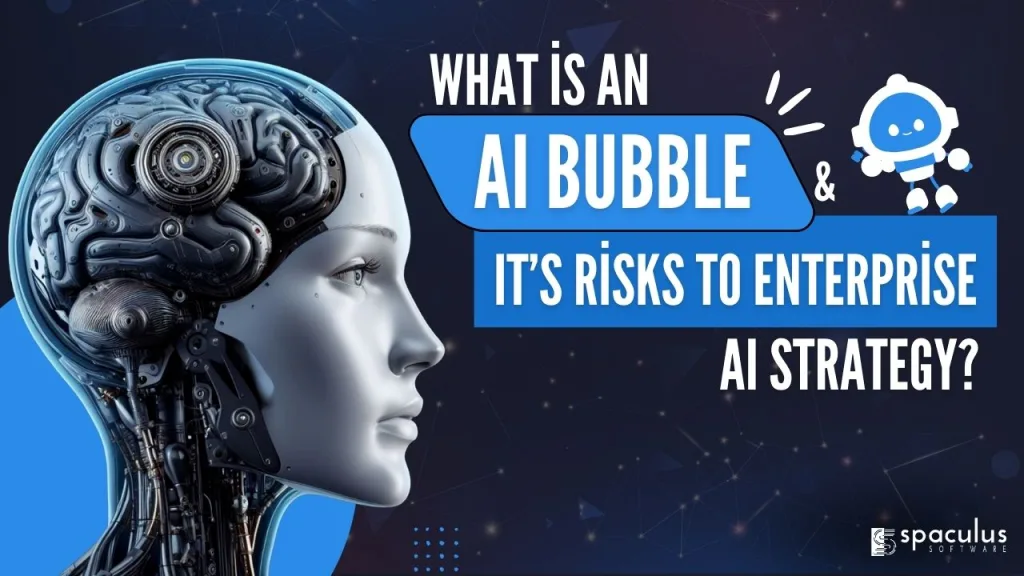
Walk into a tech expo right now and you’ll hear the buzz bouncing from booth to booth: generative AI, copilots, automation, machine learning at scale. Banks are eager to showcase their chatbots. Retailers talk up predictive engines. Even tiny consultancies have rebranded their old services with “AI-powered” stickers.
It’s exciting, no doubt. But for anyone who remembers the late 1990s, it also feels strangely familiar. Back then, shoe stores, pet-food sellers, and every bookstore under the sun were racing online. Money poured in, dreams swelled and promises soared. A few winners emerged. Most quietly disappeared. The internet wasn’t the problem, it changed everything. The issue was hype that far outpaced reality.
That same question is echoing today: are we in the middle of an AI bubble? And if so, what happens to the businesses betting their future on it?
“AI bubble” doesn’t mean artificial intelligence is fake. It simply means the numbers such as investments, valuations, and expectations are rising faster than the results underneath.
Think about housing. Prices go up when demand is strong, that’s normal. But when prices skyrocket because everyone assumes they will always go up, that’s a bubble.
AI shows the same warning signs:
AI isn’t imaginary. It is real. But the speed of excitement and the speed of real-world progress are not moving in sync.
Take IBM’s Watson. A decade ago, it was advertised as the future of healthcare. It was supposed to help doctors diagnose illnesses faster. In practice, hospitals struggled. Data was messy, integration was painful, and many projects faded away.
Fast forward to 2023, and CNET tried using AI to write financial explainers. The result? Wrong facts slipped through, readers spotted them instantly, and the site’s reputation took a hit.
Surveys back this up. MIT found that 95% of generative AI pilots at enterprises never delivered measurable business value. That’s staggering. The technology wasn’t broken, organizations just weren’t ready.
Meanwhile, billions are being poured into data centers and GPU-heavy infrastructure. Energy demand for AI workloads is climbing. If the pace of adoption slows, or regulators tighten the rules, those big bets could look reckless.
For enterprises mapping their AI journey, the risk isn’t that AI will disappear. It is that the gap between hype and reality will swallow budgets, trust, and time.
Here’s what can go wrong:
| Risk Area | Bubble Effect | Reality Check |
| Budgets | Money poured into pilots that stall. | Value comes only when tied to core business goals. |
| Trust | Customers doubt failed AI tools. | Transparency and oversight rebuild confidence. |
| Operations | Chatbots or systems collapse at scale. | Careful engineering enables stability. |
| Talent | Over-reliance on vendors. | Upskilled teams create resilience. |
| Regulation | Rushed rollouts invite penalties. | Governance frameworks avoid fines. |
| Costs | Hidden energy and upkeep drain ROI. | Modular, phased adoption controls expenses. |
At Spaculus Software, we’ve seen a consistent theme: the technology isn’t the stumbling block. The real issues are messy data, undertrained teams, and governance gaps. When those get fixed, the “AI bubble” doesn’t feel like a threat, it feels like pressure that forced companies to prepare properly.
The dot-com bubble didn’t kill the internet. It cleared the field, leaving behind those who had real strategies and patient execution.
The same pattern may play out with AI. A cooling market would weed out flimsy startups and leave behind enterprises that invested in foundations such as good data strategies, strong governance, and technical depth.
That’s why the right question isn’t “Should we use AI?” It is “How do we use it wisely, and survive when the hype cools?”
Here are principles that separate hype-chasers from long-term winners:
A product manager at a global e-commerce company summed it up bluntly:
“We thought AI would save us millions in logistics forecasting. Instead, we spent six months just cleaning our data. Oddly enough, that turned out to be the best part. Fixing those pipelines gave us more value than the AI tool itself.”
That’s the hidden truth. AI forces enterprises to confront messy realities. And sometimes, the cleanup is more valuable than the shiny tool that triggered it.
Artificial intelligence isn’t a fad. But the excitement around it will cool, investors will get cautious, and some projects will collapse. That’s how bubbles work. What matters is what survives.
Enterprises that treat AI like a marathon rather than a sprint will come out stronger. They will build modular systems, train their people, stay compliant, and measure ROI at every step.
At Spaculus Software, we’ve learned this from experience. The organizations that thrive aren’t the ones chasing every new headline. They’re the ones that take time to prepare, whether that means building smarter chatbots, hiring skilled Python developers to strengthen their teams, or designing SaaS platforms that scale safely. Real transformation doesn’t come from hype, it comes from patient, deliberate strategy.